Fintech First Users: How 22 Fintech Startups Got Their First Users
Every startup faces the challenge of acquiring its first users after the completion of an MVP.
For companies founded by established industry players, reaching out to existing industry contacts can be enough, but most startups need a more aggressive launch plan. This is especially true in fintech, which has an unusually high cost of customer acquisition when compared to other industries like consumer internet.
However, unless a fintech founder is solving a predefined problem established by years of industry experience, the need for early user feedback and iteration is no less than in other sectors with lower customer acquisition costs, which makes learning from the successes and failures of other founders especially important.
This resource explains how some of the most successful fintech startups got their start.
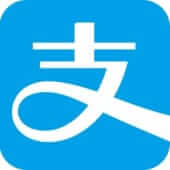
Alipay

TradingView

Unison

OurCrowd
Our-Crowd

Brex

Starling Bank

Plaid
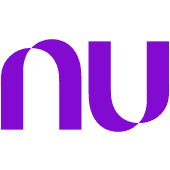
Nubank

Nova Credit

Bitso
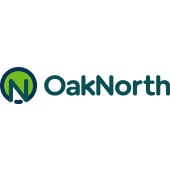
OakNorth
Oak-North

Metromile
Metro-mile
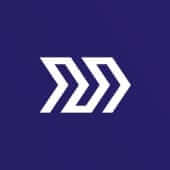
Marqeta
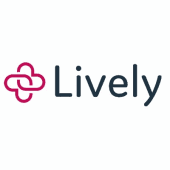
Lively

GoHenry
Go-Henry

SumUp

Funding Societies
Funding Soc-ieties

Everledger
Ever-ledger

Pockit
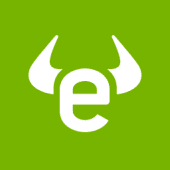
eToro

GoCardless
GoCard-less
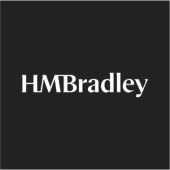
HMBradley
HM-Bradley
Alipay
Alipay is a third-party mobile and online payment platform. It has been the world’s largest mobile payments platform since overtaking PayPal in 2013. Alibaba Group founded Alipay as a separate entity in Hangzhou, China, in 2004.
As of Q4 2018, Alipay held 55.32% of the third-party payment market in mainland China and continued to grow.
Alipay grew out of Taobao, the Chinese auction site launched by Alibaba. Taobao added a “Guaranteed Transaction” function on its site in 2003. Jiao Zhenzhong, an undergraduate at the Xi’an Institute of Technology, wanted to buy a $110 second-hand Fujifilm camera listed by Cui Weiping, a college student in Japan.
Although the buyer and seller agreed on a price, the mechanics of the online transaction had not been worked out. Would Jiao send the money before Cui shipped the product?
At an impasse, Jiao clicked on the “Guaranteed Transaction” function, which required him to transfer the money to Taobao’s finance department. Taobao would confirm that Jiao received the camera before releasing payment to Cui.
Jiao initially panicked and canceled the transaction, but a Taobao employee called Jiao and offered to guarantee the transaction personally with her own salary. Jiao agreed, and the transaction went through.
From there, much like the growth of PayPal within the eBay ecosystem, the organic growth of Alipay was natural, given the growth of Alibaba’s auction business.

TradingView
TradingView is a social network for independent traders and investors based in London. It started in Chicago in 2010, went through TechStars in 2013, and now has over 15 million monthly active site users, with more than 40,000 publishers, fintechs, and brokerages using its tools.
TradingView launched its website in 2010 and gathered initial “power users” by chatting 1-on-1 with traders in Chicago. Many traders in Chicago needed quick/clean charting and data, and TradingView was the first to provide that for free.
User growth built momentum through word of mouth, spreading among the Chicago trader community and then to Europe, with traders on the Deutsche Börse and London Stock Exchange using the platform as well.
Off the back of that initial traction, influential financial blogger Barry Ritholtz wrote an article about TradingView in 2011. TradingView saw nearly 10,000 users visit the site thanks to that initial write-up.

Unison
Unison is a real estate co-investing platform focused on single-family homes.
For institutional investors, it provides access to single-family residential real estate without the management headaches of owning and operating large numbers of individual houses. For homeowners, Unison offers a way to convert equity in their home into cash without adding debt.
Unison converts up to 17.5% of a home’s value to cash in exchange for sharing in the home’s value when it is sold.
Founder Thomas Sponholtz got the idea for Unison while managing a portfolio at Barclays Global Investors.
At Barclays, Sponholtz managed about $120 billion for global pension funds, endowments, and private wealth funds. Moving the needle with such a large portfolio was challenging, and Sponholtz was looking for investment ideas that could absorb large sums of capital.
Real estate is a standard vehicle for institutional investors. Still, access to the world’s largest asset class, residential real estate, was limited due to the cost and complexity of managing portfolios of single-family homes.
When Sponhotz made his annual trip to visit Barclays’ largest investors, his clients asked the typical question: “What’s the new interesting thing going on that you guys have seen?”
Sponholtz brought the idea for Unison up to the clients and asked for their opinion. Their feedback was more than just positive — they wanted to know how they could get this exposure.
According to Sponholtz:
“They all said, ‘Ah. It’s the biggest in the world. We want it. What can we do?’ And that became: ‘You know, you should go do this – here’s some money to go start the company.’ So after a year, I decided to take this flyer and start the company.”
With capital to deploy, getting it in the hands of homeowners was relatively easy. After the Global Financial Crisis, many Americans are wary of debt, but 132 million homeowners own about $30 trillion worth of residential real estate, and $18 trillion of that value is equity. Making that equity liquid gives the homeowner greater optionality to pay bills, renovate the house, or send kids to private schools – without the risk of adding debt.

OurCrowd
OurCrowd is a global venture investing platform that allows institutions and individuals to invest in emerging companies, aiming to expand access to the VC asset class beyond those who can meet the $1 million+ minimums of traditional VC funds.
By lowering the minimum investment to $50,000, OurCrowd allows the “mass affluent” to invest in technology companies while they are still growing quickly.
OurCrowd’s launch strategy was to prove the concept with a small pool of trusted friends and family, and use that initial circle to build the infrastructure needed to create a scalable company.
Founder Jon Medved started by putting together what he describes as an “investor social network” of his friends and family in Jerusalem. That network functioned something like an angel investment club, except with Medved putting outsized effort into curating the best tech deals for his network to invest in.
Seeing an enthusiastic response from his friends and family, Medved decided to expand access, which required building a team to structure and diligence a greater number of deals so the system could work at scale.
As of January 2021, investors have committed $1.5 billion to OurCrowd, for over 250 portfolio companies and twenty-three different funds.

Brex
Brex, an American fintech based in San Francisco, provides business credit cards and cash management accounts to tech companies. Brex cards are business credit cards that are not linked to personal credit or assets. To qualify, a company must have at least $100,000 in its bank account or monthly revenue.
Henrique Dubugras and Pedro Franceschi, both Brazilian nationals, founded the company in 2017 after selling online payments company Pagar.me to Stone. It launched in June 2018 after a year-long private beta.
To maximize exposure during the launch, the founders deliberately held back public information.
This stealth strategy made it difficult to hire employees or negotiate partnerships, but gave Brex the benefit of concentrated press and word-of-mouth during the launch.
For the launch, Brex used an embargo strategy. Dubugras met in person with ten reporters in San Francisco and New York. The reporters agreed to break the Brex launch at an agreed-upon time, coordinated with Brex’s press release.
A Head of Growth team member managed the launch, but Dubugras acted as spokesperson.
Brex set targets for both page views and product sign-ups. Brex set a goal of 50,000 page views and a 1% conversion rate.
Brex only got 30,000 pageviews during the launch but achieved a 2.5% conversion rate and beat its signup target.

Starling Bank
Founded by Welsh banker Anne Boden in 2014, Starling Bank is the fastest-growing bank in the United Kingdom with 1.5 million retail customers, 150,000 small business customers, and over 900 employees. Based on the founding thesis that technology had changed every major industry except banking, Starling was named the Best British Bank in the British Bank Awards in 2018, 2019, and 2020.
When Starling first launched its app in app stores in 2017, it had a small budget, and most of the marketing was done through digital marketing/paid social and, of course, press coverage.
However, from the beginning, there was an early emphasis on live events.
Starling then started going to highly populated live events, where we thought the demographic would be interested in Starling. These included Stylist Live, Taste London, the Goodwood Festival of Speed, and BBC Countryfile Live.
Starling also did a travel show, a wedding show, a parent and baby show, and many tech festivals, conferences, and events, including one organized by Dream Nation. Starling also sponsored a gig organized by NME, in a bid to attract social media influencers. Unfortunately, this wasn’t a hit.
Starling sent the marketing team to these events and sought volunteers from other parts of the business, including senior executives and the CEO.
They gave out information about Starling and their now-famous and much-coveted Starling socks, which became a staple in London’s fintech scene.
Starling used these events not just to push Starling, but also to talk to people about who they bank with and why — and what it would take to persuade them to switch banks.
They then launched an OOH (out of home advertising) advertising campaign in a handful of key cities.
Only later did they go in for TV and radio ads and posters on the London Underground.
Less than four years later, Starling has opened more than two million accounts.

Plaid
Plaid was founded in 2012 by Bain consultants William Hockey and Zachary Perret. Plaid acts as plumbing that allows apps to connect to users’ banks to confirm account holders. It can integrate apps with bank accounts without the paperwork or penny deposits formerly required for verification, allowing immediate use of the apps.
Plaid’s API can verify users with just a bank customer’s online username and password and is used by startups like Coinbase, Betterment, and Acorns.
It helps fintech startups because they don’t need to spend time and money building connections and getting them approved by slow-moving banks. It also accelerates user growth because uploading PDFs or requiring micro-transactions depresses sign-up rates.
Plaid works with approximately 10,000 banks and remains one of the world’s preeminent fintech startups — an acquisition deal with Visa was recently killed on antitrust grounds.
Perret and Hockey initially built a financial planning tool that never got traction. While building the tool, they figured out how to connect the app to their bank accounts.
Launching the company in New York in 2012, Perret and Hockey stumbled into conversations with Venmo’s engineering chief, who used Plaid’s technology to reduce the risk of allowing instant peer-to-peer money transfer.
Venmo does this by settling transfers in large batches. Venmo customers can send money instantly, but the actual payment is delayed a day behind the scenes. Venmo used Plaid to know that the sender had enough money in their bank account, reducing risk.
Their relationship with Venmo gave them credibility among other fintechs that sought to replicate Venmo’s success — some of which became household names.
Even with these early customers, Plaid still struggled to raise money from Silicon Valley VCs. They eventually convinced Spark Capital to lead a $2.9 million seed round in July 2013, and they’ve been on a steady growth trajectory since.

Nubank
Nubank is a Brazilian digital bank based in Sao Paulo, founded by Colombian-American entrepreneur and former Sequoia executive David Vélez in 2013.
Nubank has expanded to Mexico, Colombia, and Argentina, but to gain its first customers in Brazil, Nubank focused on offering a credit card product.
Credit cards are relatively easy products for building a consumer brand in financial services, and in a country where banking is difficult, simplifying the sign-up process was enough to get traction.
While applying for traditional credit cards in Brazil required visiting a physical branch several times, customers could sign up for a Nubank card from a smartphone. To get started with Nubank, customers simply downloaded the app, photographed their documents, and answered a series of questions.
One of the reasons for the onerous sign-up process at traditional Brazilian bank was inconsistent credit bureau coverage. To pursue this streamlined signup process while limiting losses, Nubank started with very low credit limits – often as low as $10 – with new customers, gradually increasing credit lines from there.
Since the easy sign-up process and no-fee model were so unique in Brazil, the company grew 90% through referrals, with no initial spend on traditional marketing. This referral-based customer acquisition model also allowed Nubank to use referral trees to assess credit limit
Vélez explains, “Good customers tend to invite other good customers. Risky customers tend to invite other risky customers.”
Based on the success of its credit card product, Nubank has expanded into a full-service digital bank, offering digital accounts, loans, business accounts, insurance, and rewards programs to customers in Brazil, Mexico, Argentina, and Colombia.
As a fully digital bank, Nubank passes the savings from not having bank branches to its customers, offering no-fee accounts and credit cards in countries where banking is typically characterized by high fees and poor customer service.

Nova Credit
Nova Credit is a cross-border credit bureau founded in 2016 by Misha Esipov, Nicky Goulimis, and Loek Janssen. The founders – all graduate students at Stanford – were immigrants to the United States who had difficulty accessing credit in the U.S., despite having credit histories in their native countries.
Nova Credit aims to solve that problem by helping newcomers apply for products and services in the U.S. using their international credit history from countries including Australia, Brazil, Canada, India, Mexico, Nigeria, South Korea, and the UK.
Essentially, Nova Credit buys credit reports in foreign countries, translates the applicant’s credit history to a FICO-equivalent score, and sells that information to creditors in the U.S. and Canada. They call this scoring and reporting format a Credit Passport.
Nova Credit’s initial success can be largely attributed to its early partnership with American Express.
This relationship began with a cold LinkedIn message from COO Nicky Goulimis in the winter of 2016.
An American Express credit risk leader championed the project internally, and the companies worked together to refine the offering before launching a pilot in 2018. Based on the success of that pilot, Nova Credit announced a full launch in October 2019.
The initial integration with American Express offered immigrants from five countries the ability to instantly and securely share their credit history during the online card application process. This partnership has expanded to include additional countries.
The American Express partnership gave Nova Credit the opportunity to refine its service offering by working with an industry leader, and it has since rolled out that product to additional customers in the financial services and real estate spaces, including property management software company Yardi, background check provider First Advantage, and student loan originator MPOWER Financing.

Bitso
Bitso is a cryptocurrency exchange platform based in Mexico City. Users can use smartphones and other devices to buy and sell bitcoin and other cryptocurrencies.
Bitso was founded in 2013 to help Vancouver businesses accept bitcoin payments. However, the company’s founders quickly moved the firm to Mexico to address the large gaps in that country’s financial services industry.
The founders saw an opportunity for cryptocurrency to make a big difference in a country where more than fifty percent of the population was “unbanked,” and buying and selling bitcoin was difficult and unsafe.
Bitso’s initial traction in Mexico speaks to the importance of meeting an unserved need in a rapidly-growing market. The hype surrounding bitcoin, combined with the need for a secure portal for bitcoin transactions in Mexico at the time, made customer acquisition via word-of-mouth and press coverage initially quite easy.
The first transaction on Bitso was between two of the founders, Ben Peters and Daniel Vogel, who exchanged 0.05 bitcoins for 5,948.00 Mexican pesos.
Within a day of that first transaction, Bitso had its first customer. The following day, the Bitso team woke up with 300 more new customers.
Since Bitso’s technology was positioned to capitalize on the organic growth of cryptocurrencies in Latin America, customer acquisition did not require clever growth hacking. The lesson from Bitso is to pick a rapidly-growing and underserved market and rely on word-of-mouth.
Indeed, Bitso’s difficulties were not in generating demand but scaling to service that demand – which it’s done successfully. It is now a global platform that operates in Mexico, Argentina, and Brazil and serves over three million customers. Bitso plans to continue its expansion in Latin America.

OakNorth
OakNorth Bank, launched in September 2015, provides fast, flexible, and accessible debt finance (from £500k to £45m) to fast-growth businesses.
Unlike many alt lenders that focus on business lending, OakNorth Bank is not focused on sole proprietors. Instead, it focuses on businesses that have traction and are looking to scale.
The idea to develop software to support lending to growth-stage companies came from the experience of OakNorth’s co-founders, Rishi Khosla and Joel Perlman. In 2005, the pair looked for a working capital facility for their previous business, Copal Partners, a financial research firm. Although they showed strong cash flow and retained clients over the prior three years, no commercial bank would lend to them.
After selling Copal Partners to Moody’s in 2014, Khosla and Perlman decided to address the funding gap, first proving their model within OakNorth Bank before licensing their Credit Intelligence software to other banks.
When OakNorth Bank first launched in the UK, it didn’t have an advertising budget, so it established itself through cold outreach. The team reached out to every business owner, accountant, lawyer, broker, etc. they knew and explained the new offering.
With a Rolodex and access to capital, it did not take long to get clients through manual prospecting because the niche was so underserved.
After decades of consolidation in the banking industry, growth-stage businesses have difficulty borrowing from commercial banks. For global financial institutions, the returns for lending to growth-stage companies are too small to justify the cost of the underwriting process.
Meanwhile, although web-based alternative lending platforms have expanded access to capital to sole proprietors and micro-businesses, these platforms rarely meet the needs of growth-stage companies.
When a bank is lending money to an underserved niche, it is easy to grow quickly. The question is how to do so without suffering losses. Although OakNorth Bank was recently in the news for defaults, it has only had ten cumulative defaults since inception – seven of which have been repaid in full.

Metromile
Based in San Francisco, Metromile is a car insurance startup that provides pay-per-mile car insurance — a form of usage-based insurance.
Instead of a flat rate, the driver pays a base rate plus a fixed rate per mile. This model benefits low-mileage drivers (those who drive less than 30 miles per day).
Metromile launched an “alpha” and “beta” in 2012.
Metromile launched in Oregon and then California, Illinois, and Washington, focusing on environmentalists looking to drive less, millennials who relied on public transportation and ride-sharing, tech-savvy drivers, and retirees.
To acquire users, Metromile gave the Metronome device — the precursor to its current in-car sensor called the Pulse device — away on the Metromile website.
The giveaway (announced in a 2013 press release) was intended to make consumers aware of how technology can leverage the data available to improve the driving and car-owner experience. Metromile provided all of the smart driving features for free.
These smart driving features included a “smart commuting” feature, similar to how Waze works today. It learned about a driver’s daily commute and let them know the best time to leave to avoid traffic.
Another popular feature was the gas optimization tool, which compared their actual usage to the car factory-rated miles per gallon.

Marqeta
Oakland-based Marqeta is a card issuing platform that enables companies to build and manage payment programs. Customers include Uber, alt lender Capital on Tap, Swedish “buy now, pay later” firm Klarna, and Swiss challenger bank Yappeal.
Marqeta founder Jason Gardner launched the company with a relatively simple product — flexible, branded loyalty cards, like those sold at grocery stores.
The company changed its offering three times before making its card-issuing platform available via open APIs in 2014. This offering appealed to companies in the emerging delivery economy, which rely on employees and contractors making purchases on customers’ behalf, and Marqeta landed key early customer DoorDash.
The Marqeta story highlights the importance of landing a flagship enterprise customer early on. The proof of concept from DoorDash gave Marqeta the traction to raise additional capital and invest in growth and product development.
However, figuring out the business model did not lead to quick success. In 2015, Marqeta was struggling to hit its revenue targets and layoffs seemed imminent. But by 2016, things began to stabilize. Marqeta added Instacart to its list of delivery clients, which use Marqeta to reduce fraud among delivery staff by limiting the items they can buy. Marqeta also began expanding out of the delivery niche by signing Square, which uses Marqeta to power its Cash App debit card.
Since 2016, growth has been steady. Marqeta signed Affirm and Klarna, and its track record of growth – doubling revenue in 2020 – gave it the momentum needed to IPO in 2021 at a $16.6 billion market cap.

Lively
Lively is a Health Savings Account (HSA) platform for employers and individuals. Although HSAs have existed since 2004, Lively founders Alex Cyriac and Shobin Uralil saw an opportunity to bring a more user-centric approach to HSA accounts to match the higher expectations consumers now have about mobile and web products.
Lively launched in March 2017, but did not pursue user acquisition until September 2017. Other than market research and a hunch that users would respond to superior UX and a more frictionless experience, the company lacked much information about its customer base, so it prioritized active testing and a bundled marketing approach to identify early adopters.
Financial review sites and vertical sites, like HSASearch.com, were very significant for Lively’s founders in the early months. The founders visited websites where consumers were talking about HSA experiences with competitors, allowing them to enter active conversations to drive awareness and engagement for Lively.
By engaging with the most vocal and flexible consumers, Lively acquired some early adopters, who noticed how different it was from the incumbents. Those early adopters shared those experiences on review and vertical sites, driving further adoption. The differentiated user-centric, modern experience prevented churn and kept the cycle of word-of-mouth spreading.
Once the loop of early adopters and word-of-mouth got going, Lively added fuel to the fire with aggressive PR and SEO campaigns.
These campaigns accelerated user growth and also moved the conversations from specialized vertical sites to more mainstream publications with wider reach.
One factor preventing growth is that the HSA is not a mainstream offering, but focusing on customer experience and building relationships with consumers has kept the flow of word-of-mouth going.
Once these organic channels were working, Lively scaled its user acquisition with paid media — especially SEM — to maximize reach.

GoHenry
Debit card and smart money app GoHenry was founded in 2012 to help children and teens learn how to be good with money. It combines web and mobile apps with a debit card with parental controls, so kids and teens gain experience managing money with guardrails.
GoHenry now has nearly 2 million customers across the US and UK.
Since GoHenry was the first service of its kind, getting initial users required a degree of education and iteration. Its first one hundred customers were part of an extended beta trial for many months before the official launch.
As the first to market, GoHenry had no “best practices” to follow and no one to emulate. The founders chose to launch with a subscription model modeled on Netflix, which was unique to financial services at the time.
After customers validated that this model was valuable, GoHenry tested many different routes to market. Word of mouth and organic growth worked well and are still major growth drivers.
On top of this, Facebook ads and PR were strong growth channels early on.
Lastly, equity crowdfunding campaigns also helped the company grow — while allowing customers to share in the company’s success.
GoHenry has raised $70 million since its launch, of which $30m came from friends and family, angel investors, and equity crowdfunding. Of GoHenry’s approximately 5,000 shareholders, half are GoHenry customers.

SumUp
SumUp initially launched having identified a particular problem for small merchants, from independent shopkeepers to window cleaners. These businesses were prevented from taking credit and debit card payments by the cost of payment hardware, service fees, and the clunky immobility of traditional point-of-sale readers.
SumUp built its own payment solution end-to-end and designed its own devices to overcome these hurdles and make payments accessible to all.
Its first customers were a sportswear store, a juice bar, a media agency, and a hardware store – and quickly expanded from there to cafes, bars, taxi drivers, and a whole variety of businesses.
SumUp now serves over 3 million merchants.
As is typical for businesses targeting small and medium-sized business customers, SumUp’s initial customer acquisition was driven by salespeople contacting companies directly and demonstrating the benefits of the technology.
Once word started to spread, SumUp had a number of direct registrations from people actively searching for this solution for their business.

Funding Societies
Funding Societies is an SME digital financing platform that connects small- and medium-sized businesses with financing. It operates in Singapore, Malaysia, Thailand, and Indonesia (where it’s known as Modalku). Today, Funding Societies is the largest SME financing platform in Southeast Asia, where it has disbursed over S$2.6 billion.
Funding Societies began in 2014 when Kelvin Teo and Reynold Wijaya met at Harvard Business School and discovered a shared interest in debt investing. They decided to bring the idea back to their home countries in Southeast Asia, seeking to address the region’s SME funding gap.
Kelvin and Reynold were surprised by the deep interest from investors and incorporated Funding Societies Pte Ltd in Singapore in February 2015.
As a two-sided platform serving SME clients and retail investors, Funding Societies has had to acquire business customers and retail investors as users.
On the SME side, Funding Circle acquired its first borrowers through online advertising and manual outreach. Partnering with grant advisors, corporate secretaries, consultants, insurance agents, loan brokers, and accountants for client referral allowed the company to accelerate user acquisition.
On the investor side, Funding Societies attracted retail investors onto the platform by lowering barriers to entry, allowing investments as low as S$20.
However, as with many fintechs, early partnerships with incumbents were crucial. In October 2015, Kelvin and Reynold pitched the largest bank in Singapore – DBS Group Holdings. Three hours later, the CEO sent his reply: “Interested.”
Funding Societies secured a partnership with DBS Bank in April 2016, making it the first tie-up between a digital financing platform and an established bank in Southeast Asia.
The cofounders deployed the same strategy in Indonesia, under the name “Modalku,” or “My Capital.” In 2016, shortly after launching in Indonesia, the company secured a successful partnership with Bank Sinarmas, part of the biggest banking conglomerate in Indonesia.
However, when Funding Societies launched in Malaysia in 2017, it proved it could succeed in a new market without a local incumbent as a partner. As the first digital lending platform to launch in the country, word-of-mouth and digital marketing were sufficient to build traction. Funding Societies is now one of six such platforms licensed and regulated by that country’s Securities Commission (SC).

Everledger
Founded in 2015, Everledger uses blockchain and IoT technology to bring transparency to supply chains.
Critical applications include fighting counterfeiting and backstopping claims to environmental sustainability and social responsibility.
Founder Leanne Kemp started the company to address supply chain issues in the notoriously opaque diamond trade.
Kemp explains that while the 2006 film Blood Diamond brought global attention to conflict diamonds, there remained “a lack of clarity in diamond documentation,” which remained paper-based.
Adopting an electronic system would help address concerns surrounding conflict diamonds, increase consumer confidence, and resolve bottlenecks in supply chain management and regulatory documentation.
According to Kemp, “Paperless trading serves as a promising means to deal with the logistical challenges of e-commerce and, in particular, small shipments across borders.”
When Everledger got started in 2015, blockchain was used almost exclusively for cryptocurrency.
By applying blockchain technology to a high-value product that is notoriously hard to trace due to geographically dispersed and opaque supply chains, Everledger was able to gain traction.
Diamonds were an especially good vertical to start in because of the importance of provenance to the end consumer.
Kemp explains:
“Provenance establishes an item’s collectible significance beyond what it would otherwise appear to have. An item with interesting provenance might tell a story of fortunes made and lost, famous owners, and remarkable epochs in history. Sometimes the provenance of an object can be just as interesting as the piece itself! We offer our clients the ability to show their consumers information which chronicled the full journey of the jewel’s ownership, from mine to finger, and signed partnerships with the likes of GIA, Gubelin, Chow Tai Fook, Fred Meyer, Brilliant Earth and others.”
With the success of Everledger in the diamond vertical proving the concept, the company has expanded into other goods where provenance is important to consumers, including wine and high fashion.
However, Everledger has not lost track of its initial focus on ESG. The company is currently working on tracking the supply chains for batteries for electric vehicles and portable electronics.
Says Kemp, “We are now working to understand if Lithium-Ion batteries (LIBs) deserve to be called ‘blood batteries,’ and if so, Everledger’s role as a critical circuit breaker for a future conflict-free supply chain.”

Pockit
Pockit was founded in 2014 to focus on financially underserved, low-income, and unbanked consumers in the UK: those left behind by high street banks.
CEO and founder Virraj Jatania grew up in Nigeria, re-boom Dubai, Yeltsin-era Russia, and India, and repeatedly witnessed the inefficiencies of cash-based economies — hence his eventual idea for Pockit.
Pockit provides a current account, international money transfers, and other products to help customers build their credit scores and assume greater control and understanding of their financial affairs. Pockit currently has over half a million customers in the UK.
Pockit launched its first iPhone app and contactless card in 2015. By 2016, Pockit had 50,000 customers, launched its Android app, and begun offering a complete digital UK current account.
By 2017, Pockit had reached 100,000 customers.
Around 50 percent of new Pockit customers come through word of mouth.
Further growth comes through partnerships with recruitment firms that typically put workers into distribution warehouses or large construction sites.
The growth of organic customer acquisition is now a big focus for Pockit. Their recently announced partnership with Transferwise and the successful crowdfunding campaign in December 2020 are examples of initiatives driving this critical element of its growth strategy.

eToro
Tel Aviv-based eToro is a social trading and investment marketplace that enables users to trade stocks, currencies, commodities, and indices.
The first version of eToro launched in 2007 as a visual online platform that made trading easy to understand, using graphic representations for various financial instruments.
eToro launched before Facebook or YouTube built effective ad platforms, so the founders worked with online affiliate partners and comparison sites to attract their first customers. A small sales team complemented these efforts.
Building social elements like chat functions and the launch of “OpenBook” in 2010 accelerated these initial growth efforts. OpenBook consisted of feeds where users could share investing ideas and strategies, creating an online network of users that grew via word-of-mouth.
OpenBook later evolved into CopyTrading, which allows users to copy the investment strategies of experienced investors on the platform for no additional charge.
Although digital-first brokerages are now common, eToro’s social element continues to differentiate it. Not only can traders and investors execute trades, but they can also see what other traders are doing and talk to one another.
eToro now serves more than 17 million users globally and has raised more than $272 million in funding over fourteen rounds.

GoCardless
GoCardless was founded in 2011 and operates a global bank debit network that allows customers to take invoices, subscriptions, membership, and installment payments without requiring credit or debit cards (which can expire and have other issues that inhibit cashflow for merchants).
As of late 2019, GoCardless processes $13 billion in transactions per year, with 50,000 customers, including DocuSign, The Guardian, and TripAdvisor.
Like many other B2B fintech startups, GoCardless grew initially through word-of-mouth and partnerships. In an interview on the blog of Balderton Capital, one of GoCardless’s investors and a leading investor in European fintech startups, co-founder Hiroki Takeuchi said:
“We were quite lucky in that we had tapped into this market where there was a huge amount of demand. However, we had built some partnerships that were really effective and that was the predominant way that we were growing.”
The added pressure to grow post-series-A is when GoCardless focused on acquiring customers more proactively, growing a sales team, and developing a cohesive go-to-market strategy.

HMBradley
HMBradley is a challenger bank that offers interest rates to depositors that vary based on their financial behavior, paying up to 3% interest to customers that save at least 20% of their income each month.
Unlike many challenger banks that focus on offering lower fees or advancing paychecks early, HMBradley focuses on a traditional banking business model of loans and deposits. In addition, instead of relying on partners to handle payment processing, HMBradley has its own tech infrastructure, which presents service outages that customers of some online banks have suffered.
Although the banking industry is crowded, with many traditional and challenger banks competing for depositors, the offer of a 3% interest rate on deposits was so unique that it generated significant interest.
The backing by Max Levchin and high-profile board and executive team members that includes veterans of Goldman Sachs, CapitalOne, and USAA, also helped HMBradley get press attention.

Wrapping Up
Every startup confronts the issue of acquiring its first users. If a company is still determining whether it has product/market fit, acquiring users is the most important step after completion of an MVP. Feedback and validation are required to determine if going to market is worthwhile.
While some of the fintech founders had industry experience and acquired users by simply getting in front of a starving crowd, others with less experience stumbled upon their customers — often after spending months or years solving a completely different problem.
Regardless, every fintech founder can gain something from reviewing the tactics used by the most successful startups in the space.
